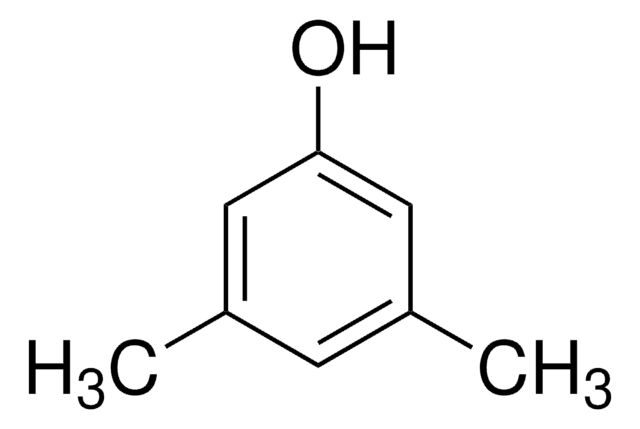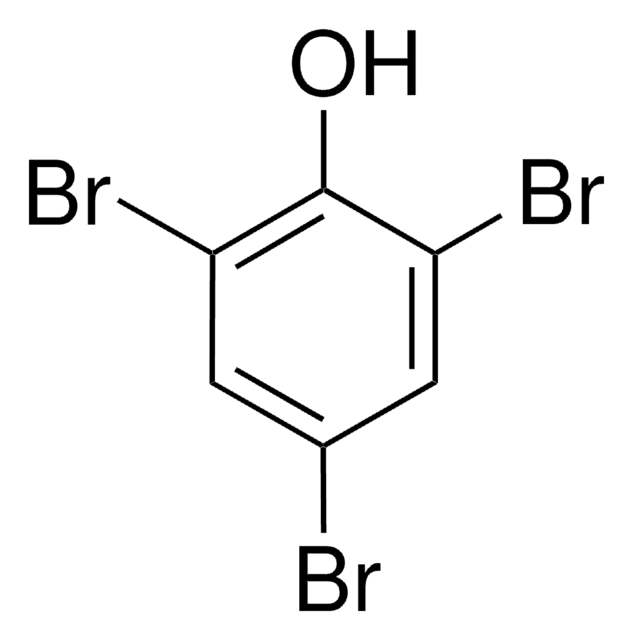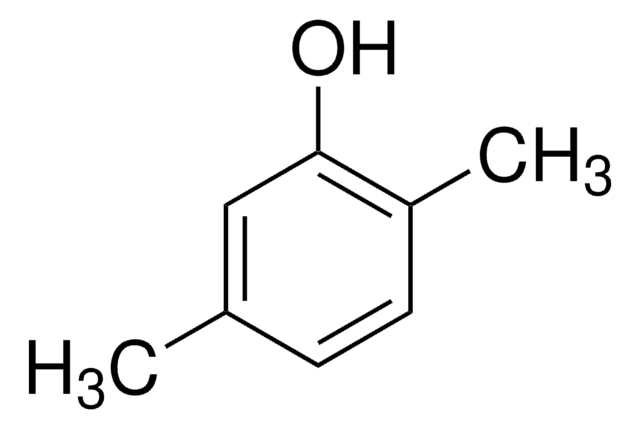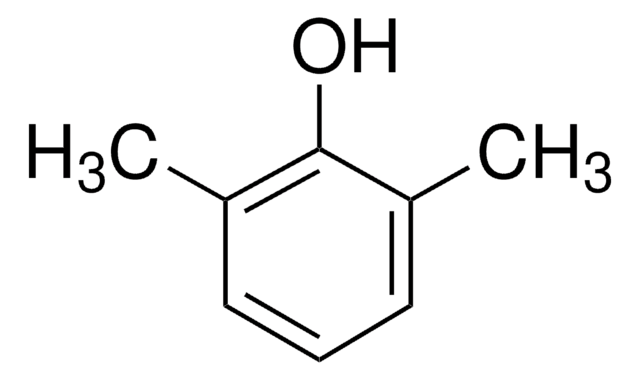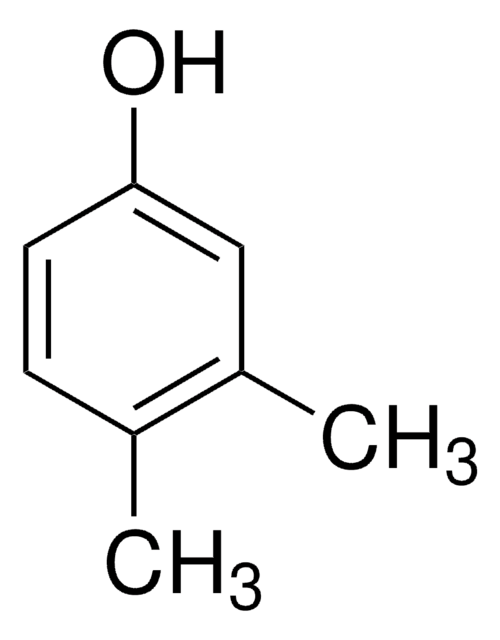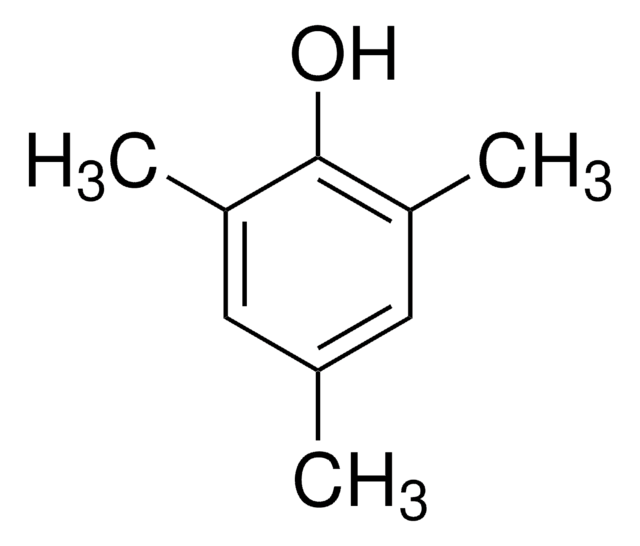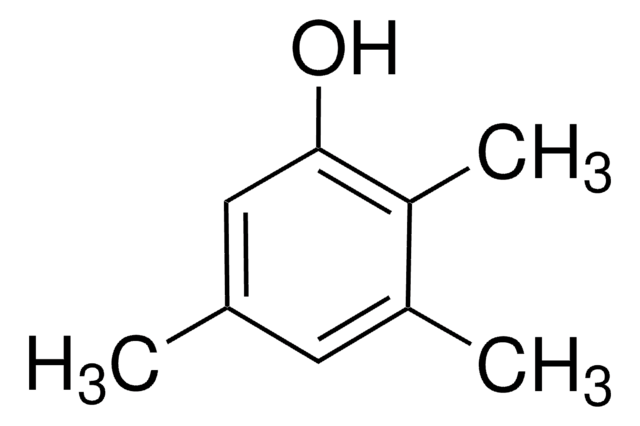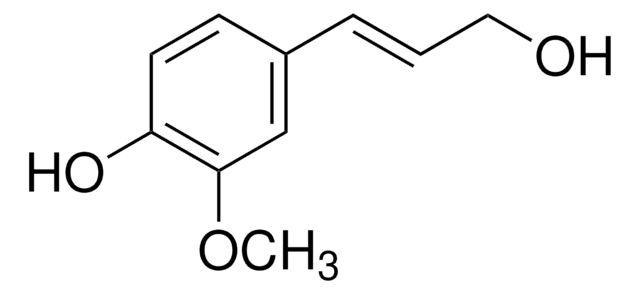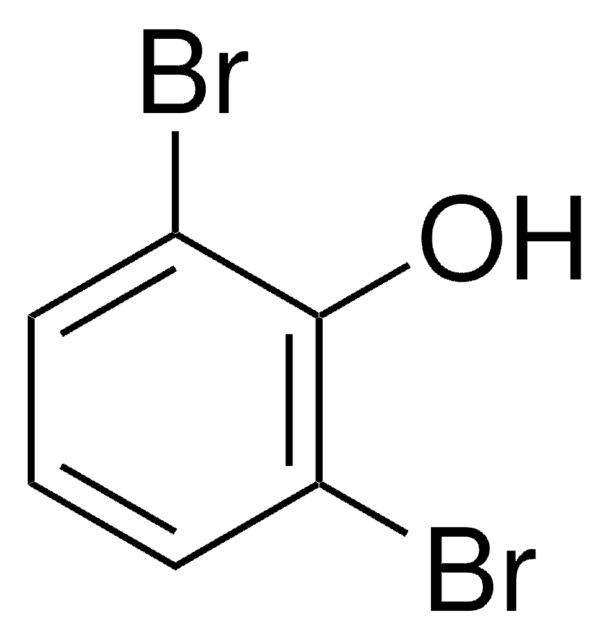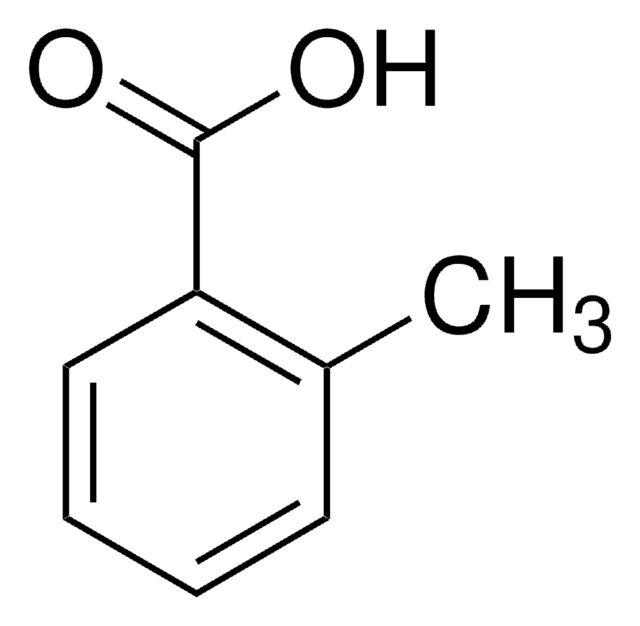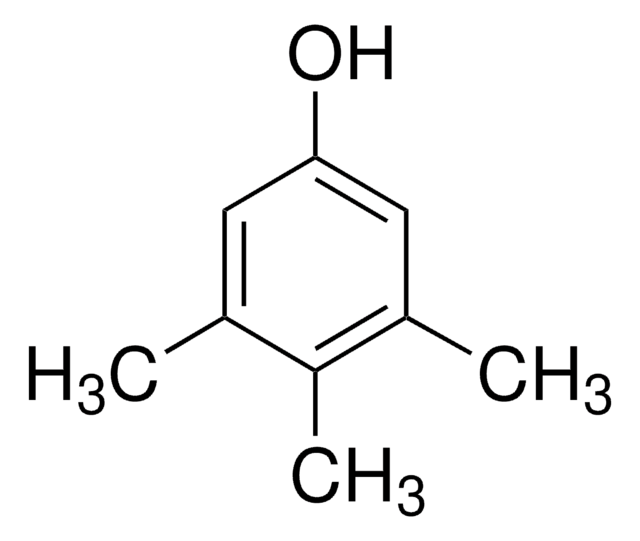D174009
2,3-Dimethylphenol
98%
Synonym(s):
3-Hydroxyl-o-xylene, vic.-o-Xylenol
About This Item
Recommended Products
vapor density
4.23 (vs air)
Quality Level
Assay
98%
form
crystals
bp
217 °C (lit.)
mp
70-73 °C (lit.)
SMILES string
Cc1cccc(O)c1C
InChI
1S/C8H10O/c1-6-4-3-5-8(9)7(6)2/h3-5,9H,1-2H3
InChI key
QWBBPBRQALCEIZ-UHFFFAOYSA-N
Looking for similar products? Visit Product Comparison Guide
Related Categories
Application
- Removal of phenolic compounds from aqueous solutions using poly (styrene-co-divinylbenzene) functionalized with aminophosphonic acid: This research explores the effectiveness of specific polymer adsorbents in removing 2,3-dimethylphenol from water (CM Davidescu et al., 2014).
- Adsorption of phenol or phenol derivatives onto styrene-1%(15%) divinylbenzene polymeric adsorbents functionalized with aminopropyl (benzyl) phosphonic: Focuses on the removal of 2,3-dimethylphenol from aqueous solutions, highlighting the efficiency of newly developed adsorbents (R Ardelean et al., 2016).
- Carpe diene! Europium-catalyzed and rearrangements of aryl-pentadienyl ethers: Describes a study where 2,3-dimethylphenol was used to test the catalytic properties of Europium in organic reactions (M Kaiser et al., 2023).
Signal Word
Danger
Hazard Statements
Precautionary Statements
Hazard Classifications
Acute Tox. 3 Dermal - Acute Tox. 3 Oral - Aquatic Chronic 2 - Eye Dam. 1 - Skin Corr. 1B
Storage Class Code
6.1A - Combustible acute toxic Cat. 1 and 2 / very toxic hazardous materials
WGK
WGK 3
Flash Point(F)
203.0 °F - closed cup
Flash Point(C)
95 °C - closed cup
Personal Protective Equipment
Choose from one of the most recent versions:
Already Own This Product?
Find documentation for the products that you have recently purchased in the Document Library.
Customers Also Viewed
Our team of scientists has experience in all areas of research including Life Science, Material Science, Chemical Synthesis, Chromatography, Analytical and many others.
Contact Technical Service